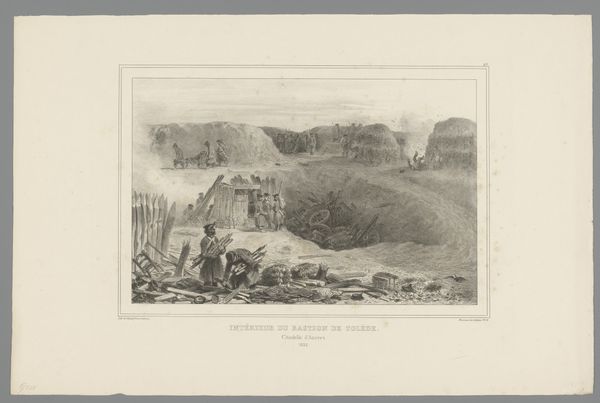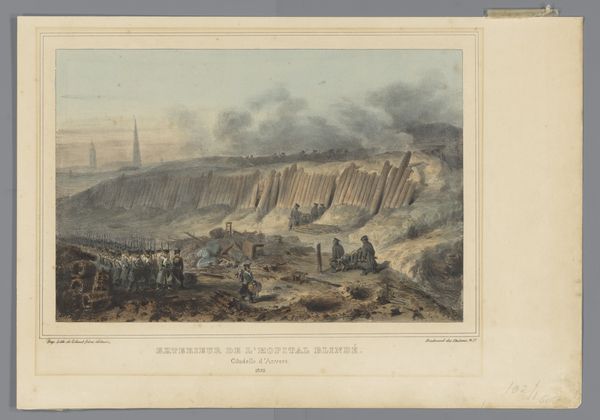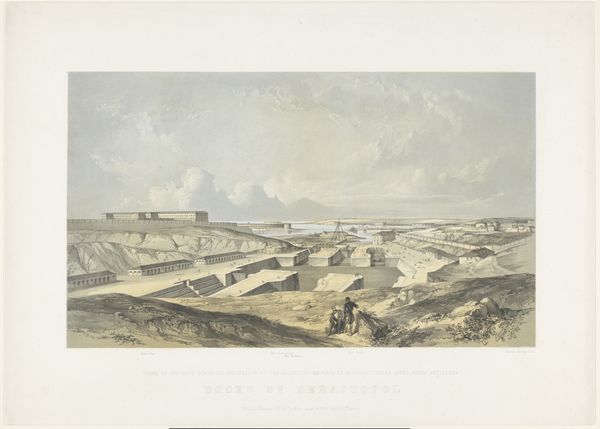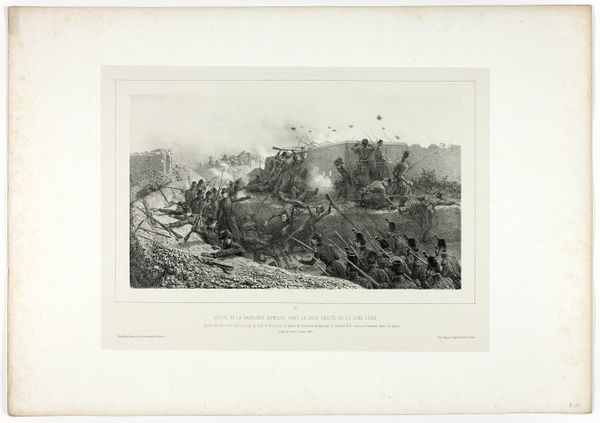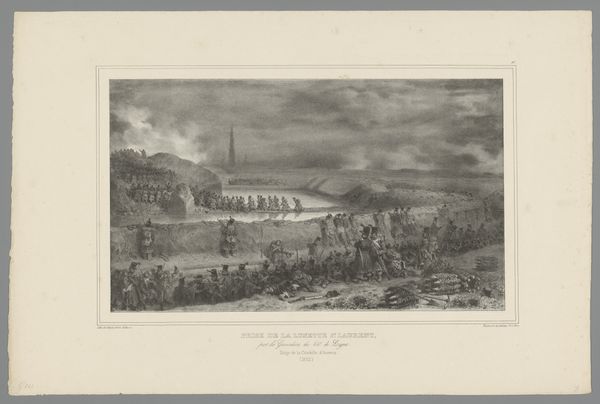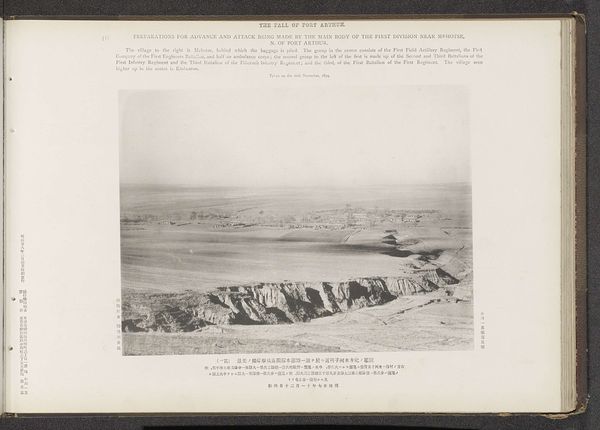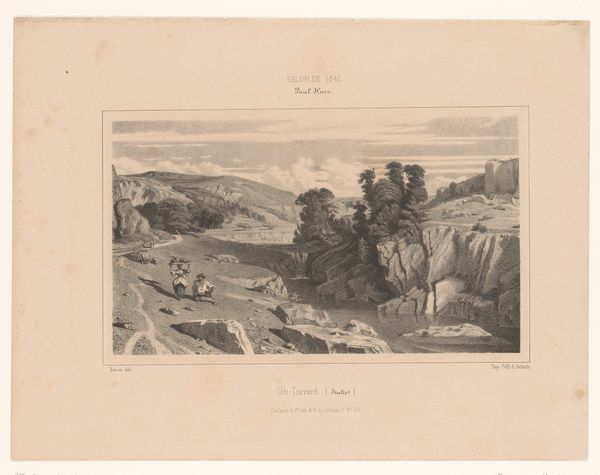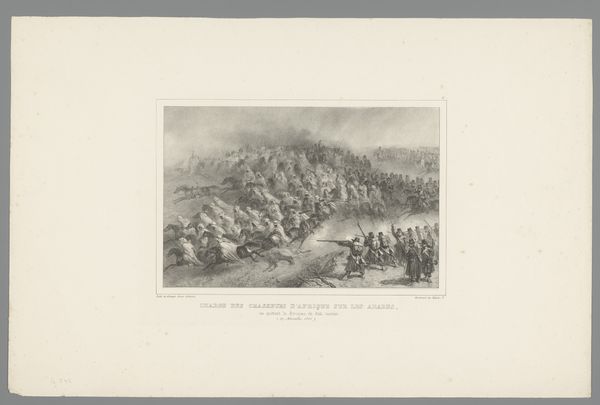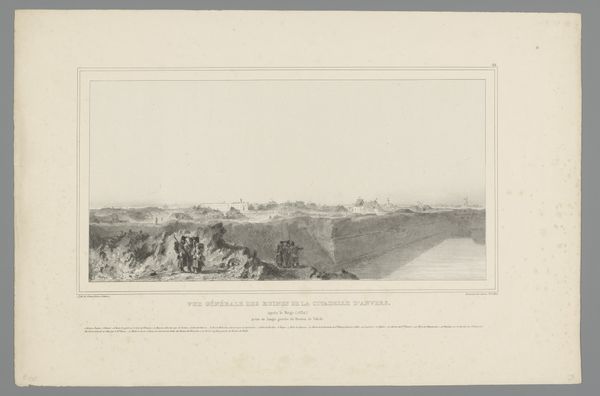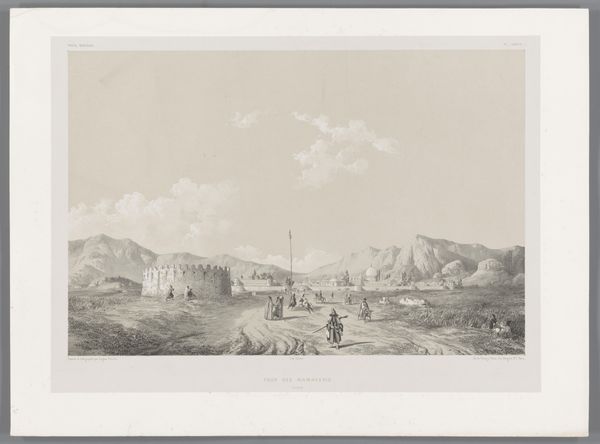
Buitenzijde van het ingegraven veldhospitaal van de Citadel van Antwerpen, 1832 1833
0:00
0:00
drawing, lithograph, print
#
drawing
#
lithograph
# print
#
pencil sketch
#
old engraving style
#
landscape
#
romanticism
#
history-painting
Dimensions: height 365 mm, width 551 mm
Copyright: Rijks Museum: Open Domain
Curator: At first glance, there is something stark and rather unsettling about this composition. The overall muted palette certainly lends itself to this interpretation. Editor: Indeed. Here we have Auguste Raffet’s “Outside of the Buried Military Hospital of the Citadel of Antwerp, 1832,” a lithograph created in 1833, currently housed at the Rijksmuseum. Raffet was documenting a very specific socio-political situation. Curator: From a purely compositional standpoint, the regimented lines of stakes, bisecting the pictorial space horizontally, create a powerful sense of confinement, even oppression. The stark contrast of light and shadow only heightens that feeling. What's your read of that formal element? Editor: This print emerges in the wake of the Belgian Revolution, a conflict rooted in religious and political differences. Raffet's image, circulated widely, becomes a stark commentary on the human cost of war and the political forces at play. The artist masterfully employs the romantic style to heighten emotional resonance within a historical depiction. Curator: I agree. There is also the intriguing focal point – a distant tower, almost ethereal in its rendering, contrasting sharply with the crude, earthly reality of the encampment in the foreground. It is almost like a glimpse of an unattainable ideal, given all the darkness in front of it. Editor: Precisely. It's that dialectic, between the ideal and reality, that this artwork is immersed in. This wasn't merely reportage; the image carries the weight of political sentiment and speaks volumes about the artist's, and perhaps society’s, disillusionment with the costs of conflict. Curator: Considering it is rendered in lithography, Raffet’s technique is surprisingly refined. The density of line and the tonal gradations he achieves gives the impression of a more painstaking drawing. Editor: Absolutely. And seeing it today, removed from its immediate historical context, still brings forth very poignant reflections about conflict, and social infrastructure… I was particularly moved to see it within our collection here. Curator: Indeed, engaging with the visual texture and contemplating the formal contrasts has revealed its enduring ability to spark discourse.
Comments
No comments
Be the first to comment and join the conversation on the ultimate creative platform.
